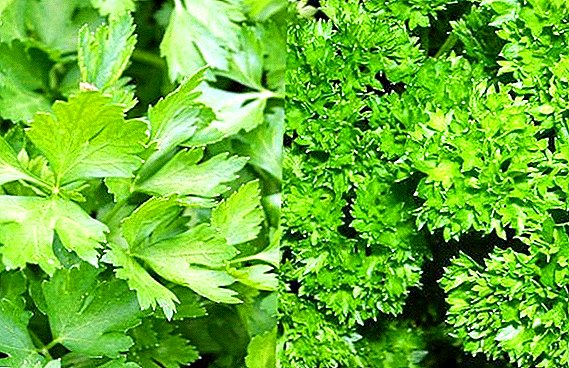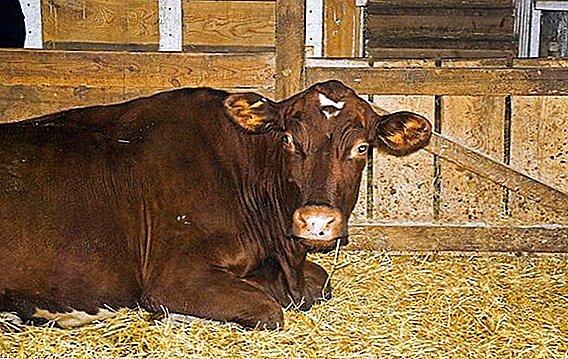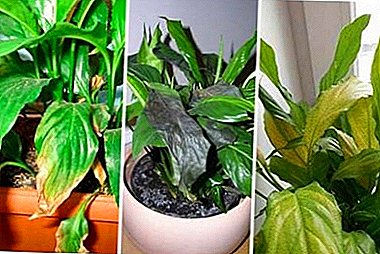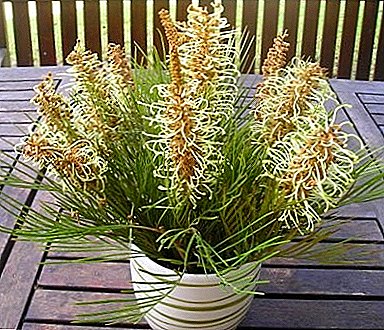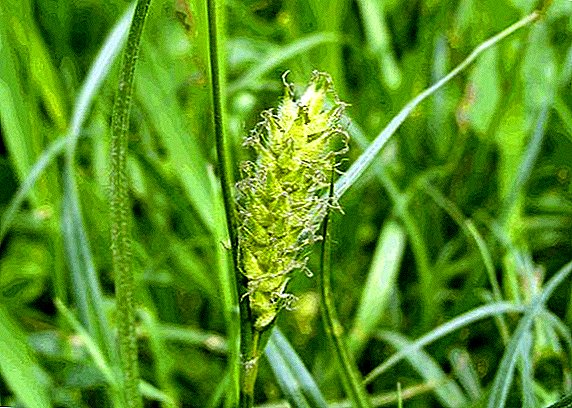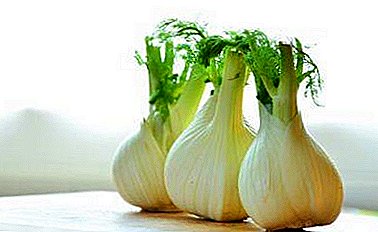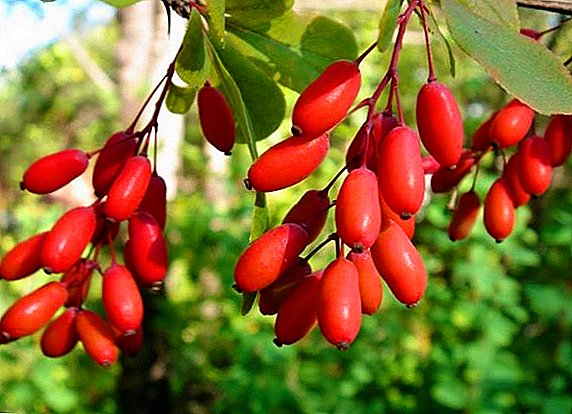 Cornel is a shrub, quite popular both in our latitudes and in the world (in Southern Europe, Asia, the Caucasus and North America) due to its taste and healing properties of berries and leaves. In addition, the plant is widely used in ornamental gardening.
Cornel is a shrub, quite popular both in our latitudes and in the world (in Southern Europe, Asia, the Caucasus and North America) due to its taste and healing properties of berries and leaves. In addition, the plant is widely used in ornamental gardening.
There are several ways to propagate dogwood: seed, layering, dividing the bush, root suckers, as well as grafting on dogwood.
How to grow dogwood from the bone
 The technology of reproduction of dogwood seeds is rather long and laborious. It begins in the fall, after picking the fruit. To begin with, the stone should be carefully cleaned of pulp. Then it is placed in a humid environment (for example, in sawdust or in moss), where it is located for a whole year. All this time it is necessary to ensure that the moss does not dry out. Thus, there is an imitation of natural conditions in which the bone hibernates, which is necessary to increase the reliability and speed of its subsequent germination (the so-called stratification). You can land a bone immediately in the ground, in which case it will rise in the second year (it will not work to save time), but the germination rate will be much worse.
The technology of reproduction of dogwood seeds is rather long and laborious. It begins in the fall, after picking the fruit. To begin with, the stone should be carefully cleaned of pulp. Then it is placed in a humid environment (for example, in sawdust or in moss), where it is located for a whole year. All this time it is necessary to ensure that the moss does not dry out. Thus, there is an imitation of natural conditions in which the bone hibernates, which is necessary to increase the reliability and speed of its subsequent germination (the so-called stratification). You can land a bone immediately in the ground, in which case it will rise in the second year (it will not work to save time), but the germination rate will be much worse.
Did you know? The bones of the not fully ripe fruits sprout faster than ripe ones - only six months later. In addition, bones taken from freshly harvested berries show better germination than previously dried.
 Immersion of prepared bones in the ground is carried out to a depth of about 3 cm. After the appearance of the first cornel shoots, they should be protected from direct sunlight, watered and fed as needed. In the fall of the second year after planting (sprouts at this point grow to 10-15 cm), the cornel is ready for planting in open ground, however, the first fruits of the shrub will give only a few years (from seven to ten). Thus, it takes a lot of time for the breeding of a dogwood from a stone: it can take 14 years from the start of preparing the stone to harvesting.
Immersion of prepared bones in the ground is carried out to a depth of about 3 cm. After the appearance of the first cornel shoots, they should be protected from direct sunlight, watered and fed as needed. In the fall of the second year after planting (sprouts at this point grow to 10-15 cm), the cornel is ready for planting in open ground, however, the first fruits of the shrub will give only a few years (from seven to ten). Thus, it takes a lot of time for the breeding of a dogwood from a stone: it can take 14 years from the start of preparing the stone to harvesting.
Did you know? There is an express method of growing cornel from a pit. Fresh seeds for three days are placed in a two percent solution of sulfuric acid, then in the winter they are placed in a container filled with wet sand, and are planted next spring.
For reproduction of cornel from the stone, wild species of shrubs are used, after which breeding cornel is grafted onto the grown seedlings.
Dogwood cutting
Propagation of dogwood with green cuttings should be carried out in the summer and only when the growth of young shoots ceases.
Cuttings must be taken from an adult (not less than 5 years old) of a healthy shrub. In the morning, a top 10–15 cm long is cut from any branch, with which shears remove all leaves except two or three upper ones and make a 5–10 mm oblique cut at the end of the shoot below the bud. The cutting prepared in this way is placed in a growth stimulator for several hours, washed with cold water and planted in a greenhouse prepared in advance; loosened soil is covered with a thick (up to 10 cm) layer of coarse sand, previously screened and washed.
The cuttings are planted very thickly, at a distance of 3-4 cm from each other. The distance to the top of the greenhouse from the top of the cutting should be 15-20 cm. Next, the cuttings are watered and covered with a film. 
Important! Watering just planted cuttings can not be done with a direct stream of water. Use a watering can with a small strainer or another device that provides gentle spraying!
The air in the greenhouse should be humid and warm enough, but not above 25 ° C, if necessary, the greenhouse should be ventilated. The cuttings also need constant watering. The root system of the cuttings with proper care is formed in a half to two months (depending on whether they have previously been subjected to the growth stimulation procedure). At this time, you can begin to harden the cuttings: the film from the greenhouse is removed first for a short time, gradually increasing it in such a way that by the tenth day to remove the film completely.
Later, germinated cuttings are transplanted into a hotbed, allowed to settle down, and then fed with nitrogen fertilizers or organic matter (manure). The following year (spring or autumn) seedlings can be transplanted to a place designated for an adult bush.
The method of breeding dogwood cuttings is not very popular due to the low growth rate.
How to propagate dogwood with vaccination
Grafting, or planting a cornel is the most preferred way to propagate a plant. It can be carried out both in spring, during the movement of the juice, and in the second half of summer, when the bark on the stock lags behind more easily.
 The grafting is made on two-year-old wild cornel saplings at a height of 10-15 cm, and for standard forms - 75-80 cm. The stock is cut horizontally with sharp shears, in the middle of the cut they make a deepening. The graft is prepared as follows: the upper oblique cut is made directly above the kidney and is processed by garden pitch, the lower one is cut off with a wedge — two cuts with a 4-cm rib. The total length of the graft cutting should be approximately 15 cm. that part of the cut remained outside. The vaccination is wrapped with a transparent film, after which the bush to the vaccination site is covered with peat mixed with sand.
The grafting is made on two-year-old wild cornel saplings at a height of 10-15 cm, and for standard forms - 75-80 cm. The stock is cut horizontally with sharp shears, in the middle of the cut they make a deepening. The graft is prepared as follows: the upper oblique cut is made directly above the kidney and is processed by garden pitch, the lower one is cut off with a wedge — two cuts with a 4-cm rib. The total length of the graft cutting should be approximately 15 cm. that part of the cut remained outside. The vaccination is wrapped with a transparent film, after which the bush to the vaccination site is covered with peat mixed with sand.
A grafted plant placed in a greenhouse gets accustomed more quickly (the graft and stock grow together the faster, the higher the ambient temperature). After fusion (it will be visible through the film - the open area of the scion will be covered with callus), the film can be removed, transplanted into open ground and subsequently cut off all shoots that will grow from the stock.
Cornel reproduction by layering
Vegetative breeding of dogwood is probably the easiest way to get a new plant. Layers can be made horizontal and arcuate. In the fall or very early spring, one-year shoots or two-year branches are chosen on a young bush, bend down to the ground (the ground in these places must be well digged and mixed with top dressings), wooden studs are fixed, sprinkled on top of the ground (the tops of the layers must be pinned, lifted and tied to vertical support) and regularly watered. After the emergence of seedlings from the buds of powdered otvodka they need twice, with an interval of two to three weeks, sprinkle with fertile soil.  The following year (better in spring), young plants are separated from the bush and transplanted immediately to a permanent place.
The following year (better in spring), young plants are separated from the bush and transplanted immediately to a permanent place.
Important! To stimulate the growth of the root system, the cutting of the bark of the shoot before laying on the ground should be cut in the place of the bend of the shoot up.
Dogwood bush division
If the dogwood bush needs to be transplanted from one place to another, reproduction by division of the bush is used.
During the year, this method can be carried out twice: either in early spring, before the kidneys swell, or, conversely, in late autumn. The bush is removed from the ground and cleaned of old branches. The root is freed from the ground and cut into several parts (each must have both a root and an upper part). The root is trimmed, the old processes are removed, after which it is planted in a prepared place. 
Propagation dogwood root offspring
There is also such a method for breeding dogwood, as planting root scions. For this, growth is used, which grows around a healthy adult bush. It is simply separated and planted separately. This can be done both in spring and autumn. However, it should be borne in mind that if the plant was grafted, then this method does not apply, since the young growth is part of the stock - a wild cornel.
When applying any of the methods described above, the main problem is how to plant the cornel so that the plant will stick. If the technology at this moment will be observed, in the future the bush does not cause any special problems in the care.


